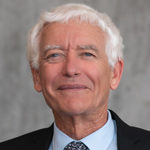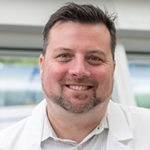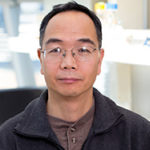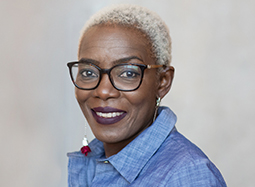GRAND RAPIDS, Mich. (Sept. 30, 2021) — Van Andel Institute has welcomed structural biologist and epigenetics expert Evan Worden, Ph.D., to its growing faculty.

Evan Worden, Ph.D.
As an assistant professor in the Department of Structural Biology, Worden will leverage the Institute’s suite of high-powered cryo-electron microscopes (cryo-EM) to investigate the epigenetic mechanisms that contribute to cancer. Cryo-EM allows scientists to visualize molecules in stunning detail at the near-atomic level and provides extensive insights into the nuts and bolts of health and disease.
Worden hopes to shed new light on the genetic and epigenetic roots of cancer and identify targets for improved cancer treatments.
“Our understanding of how epigenetics contributes to cancer has exploded in the last decade,” Worden said. “This opened the door for us to use structural biology to answer really detailed questions about how the genetic elements expressed in cancer are regulated. I’m excited to continue this work at Van Andel Institute.”
Worden is particularly interested in parts of the genome formerly derided as “junk DNA.” In recent years, research has revealed that these areas are home to critical regulatory elements that help decide when genes should be active and when they should rest — a determination that has deep implications for cancer and other diseases.
“Dr. Worden is an exceptional scientist whose expertise and groundbreaking research bridges several fields of great importance to human health — epigenetics, cancer research and structural biology,” said Huilin Li, Ph.D., chair of VAI’s Department of Structural Biology. “He has already made significant contributions to these fields as part of his postdoctoral training. We’re thrilled to welcome him to VAI and look forward to celebrating his future contributions to science.”
Prior to joining VAI, Worden was a postdoctoral fellow at Johns Hopkins University. He has earned numerous awards for his scholarship, including the prestigious Damon Runyon Cancer Research Foundation Postdoctoral Fellowship, the Paul Ehrlich Award for Postdoctoral Research from Johns Hopkins University and the Nicholas Cozzarelli Prize for best Ph.D. thesis from University of California, Berkeley.
Worden is the third faculty member to join VAI in 2021. His recruitment is part of an ongoing strategic initiative to expand and bolster VAI’s research programs.
###
ABOUT VAN ANDEL INSTITUTE
Van Andel Institute (VAI) is committed to improving the health and enhancing the lives of current and future generations through cutting edge biomedical research and innovative educational offerings. Established in Grand Rapids, Michigan, in 1996 by the Van Andel family, VAI is now home to nearly 500 scientists, educators and support staff, who work with a growing number of national and international collaborators to foster discovery. The Institute’s scientists study the origins of cancer, Parkinson’s and other diseases and translate their findings into breakthrough prevention and treatment strategies. Our educators develop inquiry-based approaches for K-12 education to help students and teachers prepare the next generation of problem-solvers, while our Graduate School offers a rigorous, research-intensive Ph.D. program in molecular and cellular biology. Learn more at vai.org.
The post Structural biologist Dr. Evan Worden joins Van Andel Institute’s faculty appeared first on VAI.
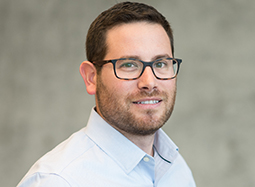
 citation index. Only about 1 in 1,000 scientists in the world make this elite list, according to Clarivate.
citation index. Only about 1 in 1,000 scientists in the world make this elite list, according to Clarivate.
